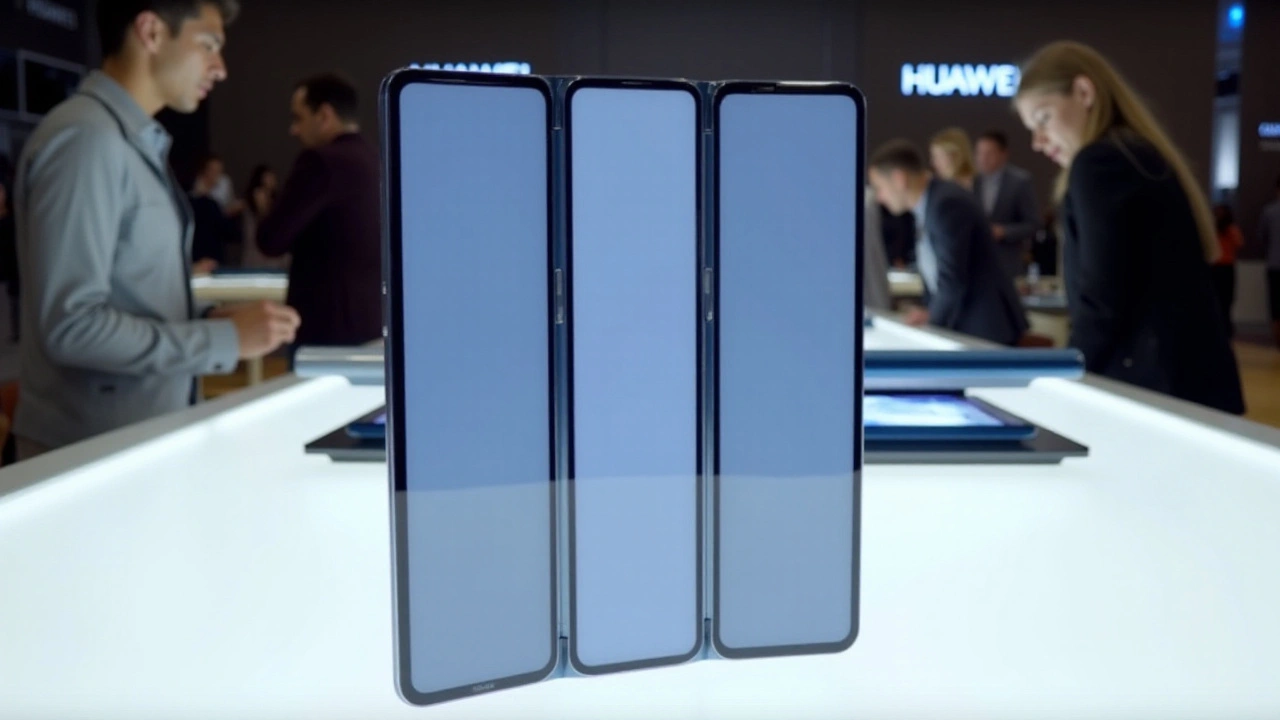Tri-Fold Smartphones: What They Are and Why You Should Care
If you’ve seen a phone that folds into three panels, you’re looking at a tri‑fold smartphone. It’s basically a regular phone that can open up like a mini‑tablet, giving you more screen real estate without the bulk of a laptop. The idea is simple: you get a pocket‑sized device that expands to a bigger display when you need it.
People love tri‑folds because they combine productivity and entertainment in one gadget. Imagine watching a video on a 7‑inch screen while still holding the phone comfortably in your hand. Or typing an email with a full keyboard layout without pulling out a laptop. That flexibility is what makes tri‑fold phones stand out from regular smartphones.
How Tri‑Fold Phones Work
The magic lies in the hinge and flexible display technology. Manufacturers use ultra‑thin glass or plastic that can bend thousands of times without cracking. The hinge connects three panels: two outer screens that act as covers and a larger inner screen that becomes visible when you open the device.
When the phone is closed, it works like any other smartphone – one of the outer panels serves as the main display and houses the camera. Open it fully, and the inner panel slides out, giving you a tablet‑size view. Some models let you use two panels side by by for multitasking, while the third stays folded as a protective cover.
Top Models to Watch in 2025
Right now, the market is still growing, but a few brands have shown promising prototypes. Samsung’s rumored “Galaxy Z Fold‑Tri” aims to add an extra hinge for a true three‑panel experience. Motorola is testing a “Razr 3” that flips open and then unfolds into a larger screen. Chinese maker TCL has teased a budget tri‑fold with a plastic substrate that keeps costs down.
Even if the flagship models are pricey, they often set the standard for durability and software support. Look for phones that offer water resistance, reinforced hinges, and regular OS updates. Those features will keep your device running smoothly for years.
If you’re on a budget, consider waiting for the first generation to drop in price after newer releases hit the shelves. Refurbished units can also be a smart way to get the tri‑fold experience without breaking the bank.
Buying Tips: What to Check Before You Purchase
First, test the hinge. Open and close it several times in the store – it should feel smooth, not stiff or wobbly. Next, examine the screen quality. Look for high refresh rates (120 Hz or more) and good color accuracy; you’ll notice the difference when watching videos or editing photos.
Battery life matters a lot because larger screens drain power faster. Aim for at least 4,500 mAh to get through a full day of mixed use. Also, check if the phone supports fast charging and wireless charging – those features add convenience.
Finally, think about your apps. Most major apps already work on foldable devices, but some might need updates to fully utilize the extra screen space. If you rely on specific software for work or school, verify that it runs well in multi‑window mode.
With these points in mind, you’ll be ready to pick a tri‑fold smartphone that fits your lifestyle and budget. Happy folding!
The Huawei Mate XT, a groundbreaking tri-fold smartphone, integrates satellite communication capabilities, enabling services like calling and messaging via the Tiantong satellite. This functionality is accessible only when the device is fully unfolded, emphasizing the innovative design and evolving technology in Huawei's smartphone lineup.
